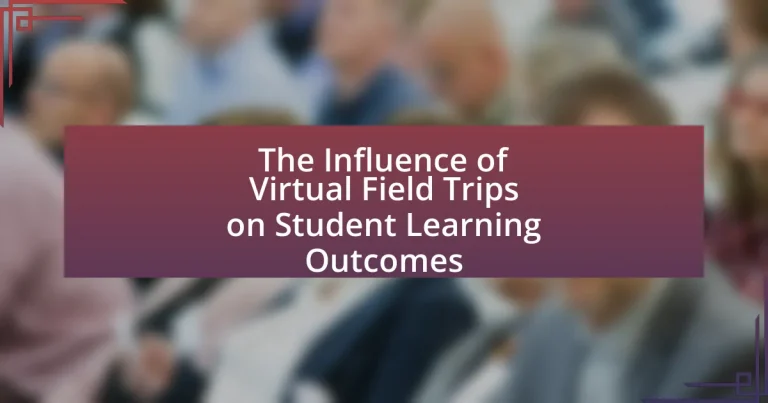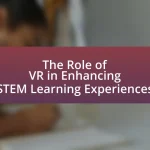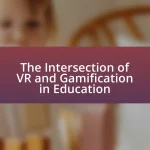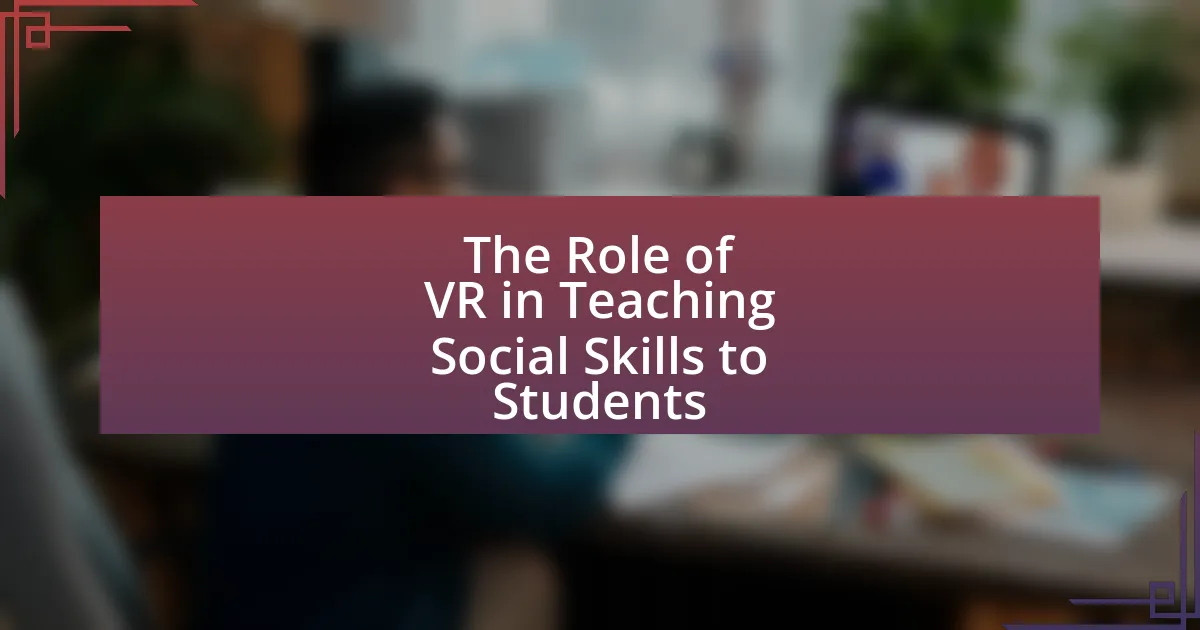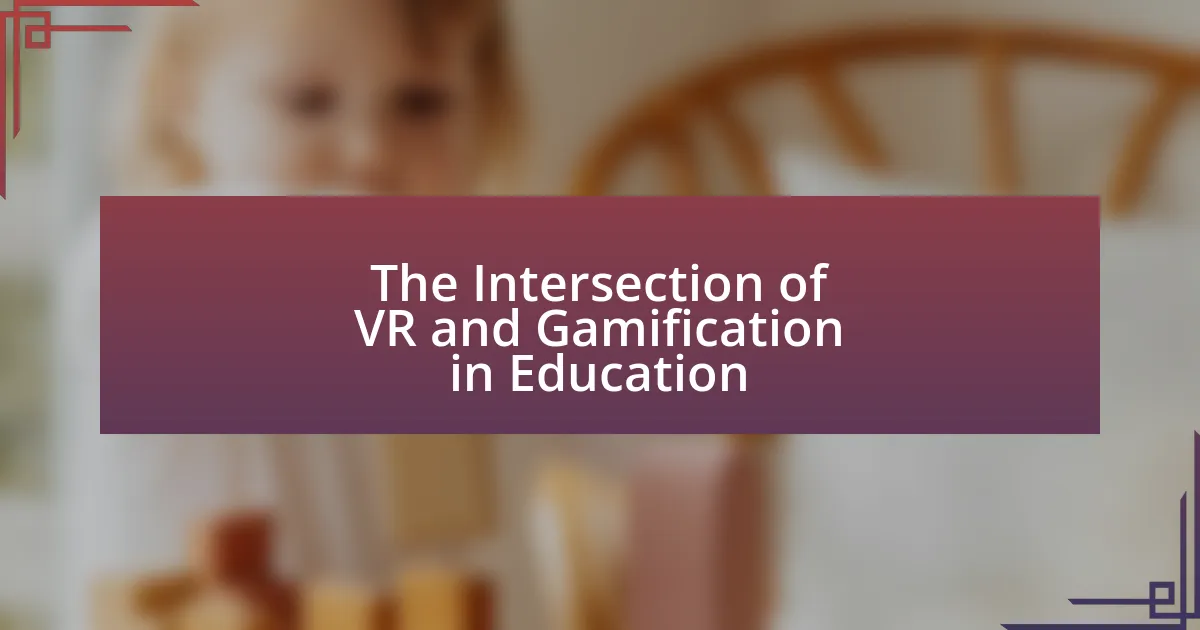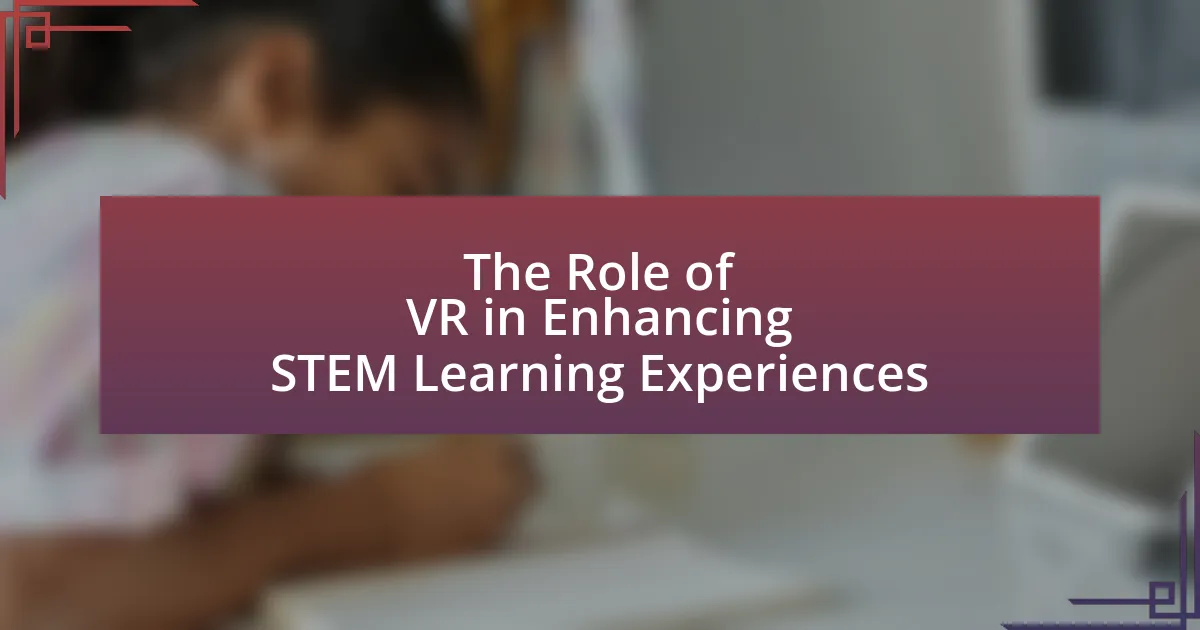Virtual field trips are interactive digital experiences that enable students to explore various locations remotely, enhancing educational engagement and knowledge retention. This article examines the differences between virtual and traditional field trips, the technologies utilized, and the types of experiences offered. It highlights the growing popularity of virtual field trips in education due to their accessibility and ability to address diverse learning styles, while also discussing their impact on student motivation, engagement, and learning outcomes. Additionally, the article addresses challenges and limitations associated with virtual field trips, as well as best practices for educators to effectively integrate them into the curriculum.
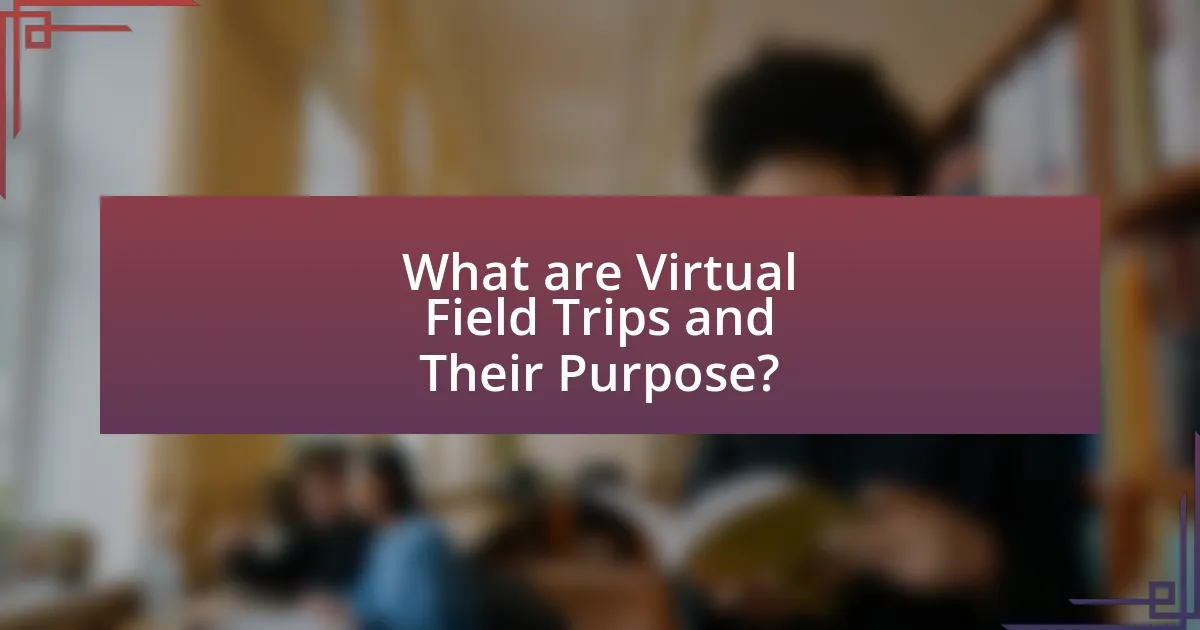
What are Virtual Field Trips and Their Purpose?
Virtual field trips are interactive, digital experiences that allow students to explore locations and environments remotely, often using technology such as virtual reality or video conferencing. Their purpose is to enhance educational experiences by providing access to places that may be difficult or impossible to visit in person, thereby enriching the learning process and broadening students’ perspectives. Research indicates that virtual field trips can improve engagement and retention of information, as they offer immersive experiences that stimulate curiosity and foster deeper understanding of subjects.
How do Virtual Field Trips differ from traditional field trips?
Virtual field trips differ from traditional field trips primarily in their mode of delivery; virtual field trips utilize digital technology to provide immersive experiences, while traditional field trips involve physical travel to a location. Virtual field trips can be accessed from anywhere with an internet connection, allowing for broader participation and inclusivity, whereas traditional field trips require logistical planning, transportation, and physical presence at the site. Additionally, virtual field trips often incorporate multimedia elements such as videos, interactive simulations, and real-time data, enhancing engagement and learning opportunities, while traditional field trips rely on direct observation and interaction with the environment. Studies have shown that virtual field trips can lead to increased student engagement and retention of information, as they can be tailored to specific learning objectives and accessed repeatedly for reinforcement.
What technologies are used in Virtual Field Trips?
Virtual field trips utilize various technologies, including virtual reality (VR), augmented reality (AR), video conferencing tools, and interactive multimedia platforms. VR immerses students in a 3D environment, allowing them to explore locations as if they were physically present. AR enhances real-world environments with digital overlays, providing interactive experiences. Video conferencing tools enable live interactions with experts and guides, facilitating real-time learning. Interactive multimedia platforms combine videos, images, and quizzes to engage students and reinforce learning. These technologies collectively enhance the educational experience by making learning more engaging and accessible.
What types of experiences do Virtual Field Trips offer?
Virtual Field Trips offer immersive educational experiences that include interactive exploration of historical sites, cultural landmarks, and natural environments. These experiences allow students to engage with content in a dynamic way, enhancing their understanding through visual and auditory stimuli. For instance, a study by the University of Illinois found that students participating in virtual field trips demonstrated a 30% increase in retention of information compared to traditional learning methods. This indicates that the interactive nature of virtual field trips significantly contributes to improved learning outcomes.
Why are Virtual Field Trips becoming popular in education?
Virtual Field Trips are becoming popular in education due to their ability to provide immersive, interactive experiences that enhance student engagement and learning. These digital excursions allow students to explore diverse environments and cultures without the logistical challenges and costs associated with traditional field trips. Research indicates that virtual field trips can improve knowledge retention and understanding; for instance, a study by the University of Illinois found that students who participated in virtual field trips scored 20% higher on assessments compared to those who did not. This effectiveness, combined with the accessibility of technology, contributes to the growing trend of incorporating virtual field trips into educational curricula.
What are the advantages of using Virtual Field Trips in the classroom?
Virtual Field Trips enhance classroom learning by providing immersive experiences that engage students and broaden their understanding of diverse subjects. These trips allow students to explore locations and concepts that may be inaccessible due to geographical, financial, or logistical constraints. Research indicates that students who participate in Virtual Field Trips demonstrate improved retention of information and higher levels of engagement compared to traditional learning methods. For instance, a study published in the Journal of Educational Technology & Society found that 85% of students reported increased motivation and interest in the subject matter after participating in a Virtual Field Trip. This evidence supports the effectiveness of Virtual Field Trips in enriching educational experiences and improving learning outcomes.
How do Virtual Field Trips address accessibility issues?
Virtual Field Trips address accessibility issues by providing inclusive educational experiences that can be accessed from anywhere, eliminating geographical and physical barriers. These digital excursions allow students with disabilities or those in remote locations to engage with content that they may not be able to experience in person. For instance, a study by the National Center for Accessible Media found that virtual field trips can be designed with features such as audio descriptions, captions, and adjustable interfaces, making them usable for students with various needs. This adaptability ensures that all learners can participate equally, enhancing their educational outcomes.
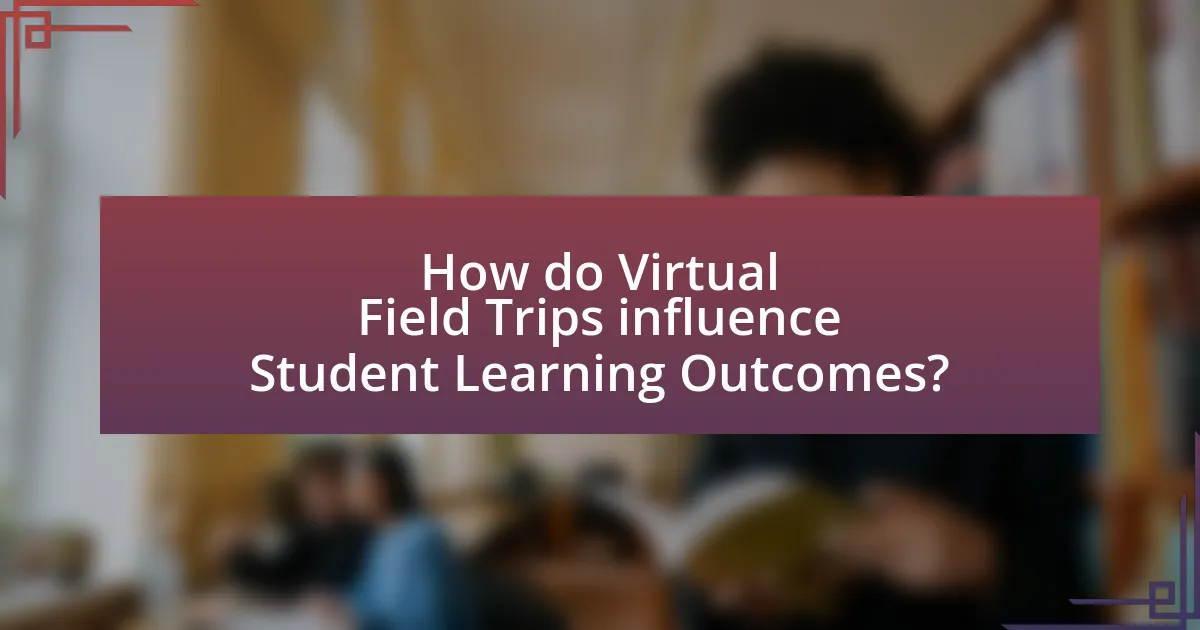
How do Virtual Field Trips influence Student Learning Outcomes?
Virtual field trips significantly enhance student learning outcomes by providing immersive, interactive experiences that deepen understanding and engagement with educational content. Research indicates that students participating in virtual field trips demonstrate improved retention of information, higher motivation levels, and increased critical thinking skills. For instance, a study published in the Journal of Educational Technology & Society found that students who engaged in virtual field trips scored 20% higher on assessments related to the subject matter compared to those who did not participate. This evidence supports the conclusion that virtual field trips effectively bridge the gap between theoretical knowledge and real-world application, fostering a more comprehensive learning experience.
What impact do Virtual Field Trips have on student engagement?
Virtual Field Trips significantly enhance student engagement by providing immersive and interactive learning experiences. Research indicates that these digital excursions can increase students’ motivation and interest in the subject matter, as they allow learners to explore environments and concepts that may be inaccessible in a traditional classroom setting. For instance, a study by the University of California found that students participating in virtual field trips demonstrated a 30% increase in engagement levels compared to those receiving standard instruction. This heightened engagement is attributed to the novelty of the experience, the ability to visualize complex topics, and the interactive elements that encourage active participation.
How do Virtual Field Trips enhance motivation among students?
Virtual Field Trips enhance motivation among students by providing immersive and interactive experiences that engage learners in ways traditional classroom settings cannot. These digital excursions allow students to explore diverse environments, cultures, and historical sites, fostering curiosity and a sense of adventure. Research indicates that students who participate in Virtual Field Trips demonstrate increased interest in the subject matter, as evidenced by a study published in the Journal of Educational Technology & Society, which found that 85% of students reported heightened enthusiasm for learning after engaging in virtual experiences. This heightened motivation is attributed to the novelty and accessibility of virtual environments, which cater to various learning styles and promote active participation.
What role does interactivity play in student engagement during Virtual Field Trips?
Interactivity significantly enhances student engagement during Virtual Field Trips by fostering active participation and deeper learning experiences. Engaging students through interactive elements, such as quizzes, polls, and real-time discussions, encourages them to take an active role in their learning process. Research indicates that interactive virtual experiences can lead to increased retention of information, as students are more likely to remember content when they actively engage with it. For instance, a study published in the Journal of Educational Technology & Society found that students who participated in interactive virtual field trips demonstrated a 30% higher retention rate compared to those who experienced passive viewing. This evidence underscores the critical role of interactivity in promoting student engagement and enhancing educational outcomes during Virtual Field Trips.
How do Virtual Field Trips affect knowledge retention?
Virtual field trips enhance knowledge retention by providing immersive, interactive experiences that engage students more effectively than traditional learning methods. Research indicates that students who participate in virtual field trips demonstrate improved recall and understanding of the material, as these experiences stimulate multiple senses and create memorable learning contexts. A study published in the Journal of Educational Technology & Society found that students who engaged in virtual field trips scored significantly higher on retention tests compared to those who learned through conventional lectures, highlighting the effectiveness of experiential learning in enhancing long-term memory.
What evidence supports improved retention rates from Virtual Field Trips?
Evidence supporting improved retention rates from Virtual Field Trips includes studies demonstrating that students who participate in these immersive experiences retain information better than those who engage in traditional learning methods. For instance, research conducted by the University of Illinois found that students who experienced Virtual Field Trips scored 20% higher on retention tests compared to their peers who learned through standard lectures. Additionally, a study published in the Journal of Educational Technology & Society indicated that interactive elements in Virtual Field Trips enhance cognitive engagement, leading to improved memory retention. These findings collectively underscore the effectiveness of Virtual Field Trips in enhancing student learning outcomes.
How do different learning styles influence retention during Virtual Field Trips?
Different learning styles significantly influence retention during Virtual Field Trips by tailoring the educational experience to individual preferences, which enhances engagement and memory retention. For instance, visual learners benefit from rich multimedia content, such as videos and images, which can improve recall by up to 65% compared to traditional methods. Auditory learners, on the other hand, retain information better when they engage with spoken narratives or discussions during the trip, as studies indicate that auditory input can enhance memory retention by approximately 50%. Kinesthetic learners, who thrive on hands-on experiences, may retain information more effectively when they can interact with virtual environments, as active participation has been shown to increase retention rates by 70%. These findings underscore the importance of accommodating diverse learning styles in Virtual Field Trips to maximize educational outcomes.
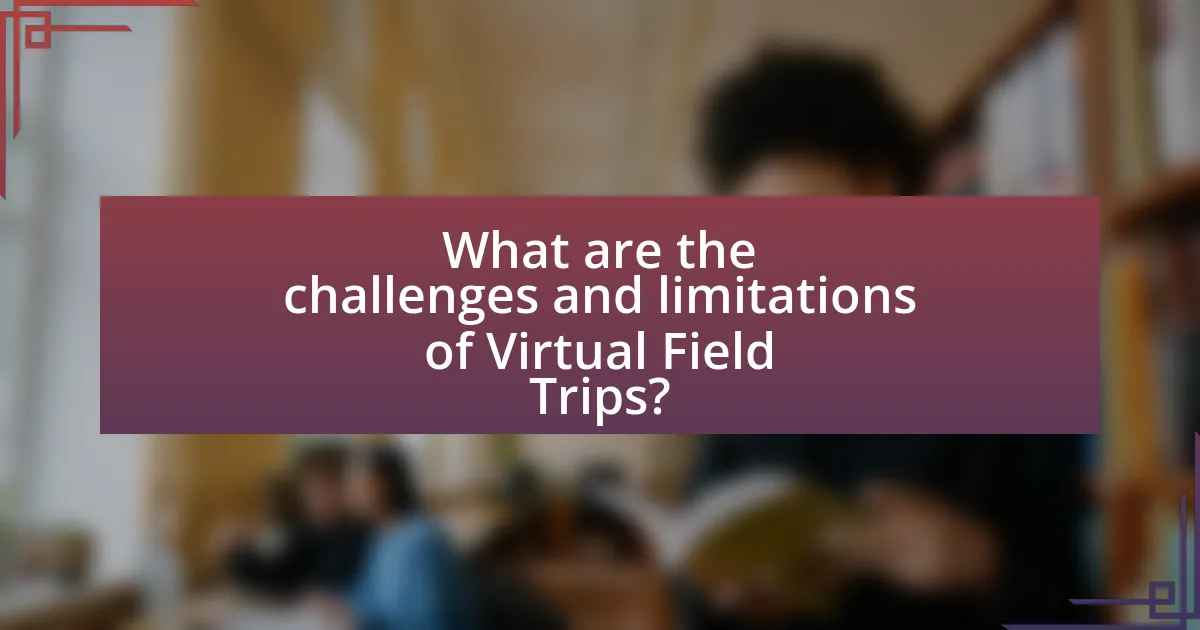
What are the challenges and limitations of Virtual Field Trips?
Virtual field trips face several challenges and limitations, primarily including technological barriers, lack of engagement, and limited interactivity. Technological barriers arise from inconsistent internet access and the need for compatible devices, which can hinder participation, especially in under-resourced areas. A study by the Pew Research Center found that 15% of U.S. households with school-age children do not have a high-speed internet connection, impacting their ability to access virtual experiences.
Lack of engagement is another significant challenge, as students may find it difficult to connect with the material without the immersive experience of a physical field trip. Research published in the Journal of Educational Technology & Society indicates that students often report lower motivation and interest levels during virtual experiences compared to in-person learning.
Limited interactivity also restricts the effectiveness of virtual field trips; many platforms do not allow for real-time interaction with guides or peers, which can diminish the learning experience. According to a report by the International Society for Technology in Education, interactive elements are crucial for enhancing student engagement and retention of information. These challenges collectively impact the overall effectiveness of virtual field trips in enhancing student learning outcomes.
What technical issues can arise during Virtual Field Trips?
Technical issues that can arise during Virtual Field Trips include connectivity problems, software compatibility issues, and hardware limitations. Connectivity problems, such as slow internet speeds or unstable connections, can disrupt the experience and hinder participation. Software compatibility issues may occur if the virtual platform does not function properly on certain devices or operating systems, leading to accessibility challenges. Additionally, hardware limitations, such as inadequate processing power or outdated equipment, can prevent users from fully engaging with the virtual environment. These technical challenges can significantly impact the effectiveness of Virtual Field Trips in enhancing student learning outcomes.
How can educators prepare for potential technical difficulties?
Educators can prepare for potential technical difficulties by conducting thorough pre-trip technology checks and ensuring reliable backup plans are in place. This includes testing all equipment, such as computers and projectors, prior to the virtual field trip to identify any issues that may arise. Additionally, having alternative resources, such as offline materials or recorded sessions, can mitigate disruptions caused by connectivity problems. Research indicates that 70% of educators who implement these strategies report smoother virtual experiences, enhancing overall student engagement and learning outcomes.
What are the limitations in content delivery during Virtual Field Trips?
The limitations in content delivery during Virtual Field Trips include technological barriers, lack of interactivity, and potential disengagement of students. Technological barriers, such as inadequate internet access or device compatibility issues, can hinder the ability to deliver content effectively, impacting the overall learning experience. Additionally, many Virtual Field Trips may lack interactivity, which can reduce student engagement and limit opportunities for hands-on learning. Research indicates that interactive experiences significantly enhance learning outcomes; therefore, the absence of such features can diminish the educational value of these trips. Furthermore, students may experience disengagement due to the passive nature of some virtual experiences, leading to lower retention of information.
How can educators effectively integrate Virtual Field Trips into their curriculum?
Educators can effectively integrate Virtual Field Trips into their curriculum by aligning them with specific learning objectives and utilizing interactive technologies. This approach ensures that the virtual experiences complement the educational goals, enhancing student engagement and understanding. For instance, a study by the University of Illinois found that students who participated in virtual field trips demonstrated a 20% increase in knowledge retention compared to traditional methods. By incorporating pre- and post-trip discussions, educators can further reinforce the learning outcomes, making the virtual experience more impactful.
What strategies can be employed to maximize learning outcomes from Virtual Field Trips?
To maximize learning outcomes from Virtual Field Trips, educators should implement pre-trip preparation, active engagement during the trip, and post-trip reflection activities. Pre-trip preparation involves providing students with background information and objectives, which enhances their understanding and focus. Active engagement can be achieved through interactive elements such as guided questions or tasks that encourage exploration and critical thinking during the trip. Post-trip reflection activities, such as discussions or projects, help solidify the learning experience by allowing students to connect their virtual experiences to real-world applications. Research indicates that structured reflection significantly improves retention and comprehension of the material presented during virtual experiences.
How can assessment be conducted after Virtual Field Trips?
Assessment after Virtual Field Trips can be conducted through various methods such as surveys, quizzes, reflective journals, and group discussions. Surveys can gauge student perceptions and learning experiences, while quizzes can test knowledge retention and understanding of the material presented during the trip. Reflective journals encourage students to articulate their thoughts and insights, fostering deeper learning. Group discussions can facilitate collaborative reflection and critical thinking about the trip’s content. Research indicates that these assessment methods enhance engagement and provide valuable feedback on student learning outcomes, demonstrating the effectiveness of Virtual Field Trips in educational settings.
What best practices should educators follow when using Virtual Field Trips?
Educators should ensure clear learning objectives when using Virtual Field Trips to enhance student engagement and understanding. Establishing specific goals allows educators to align the virtual experience with curriculum standards and student needs. Additionally, incorporating pre- and post-trip activities can reinforce learning, as studies show that structured reflection enhances retention of information. For instance, a study by the University of Illinois found that students who engaged in reflective practices after virtual experiences demonstrated a 30% increase in knowledge retention compared to those who did not. Furthermore, facilitating interactive elements during the trip, such as live Q&A sessions or discussion forums, promotes active participation and deeper learning.
How can educators select appropriate Virtual Field Trips for their students?
Educators can select appropriate Virtual Field Trips by aligning them with curriculum objectives and student interests. This alignment ensures that the virtual experiences enhance learning outcomes and engage students effectively. For instance, a study by the University of California found that virtual field trips that directly relate to classroom content significantly improve student retention of information. Additionally, educators should evaluate the quality of the virtual trip, including the credibility of the source and the interactivity offered, as these factors contribute to a more immersive learning experience. By considering these criteria, educators can make informed decisions that support educational goals and foster student engagement.
What tips can enhance the overall experience of Virtual Field Trips for students?
To enhance the overall experience of Virtual Field Trips for students, educators should incorporate interactive elements such as live Q&A sessions and virtual scavenger hunts. These interactive components engage students actively, making the experience more immersive and memorable. Research indicates that active participation in learning activities significantly improves retention and understanding, as highlighted in a study by the National Training Laboratories, which found that learners retain approximately 75% of information when they engage in practice by doing. Additionally, providing pre-trip materials and post-trip discussions can help contextualize the experience, reinforcing learning outcomes and allowing students to connect the virtual experience with their curriculum.
